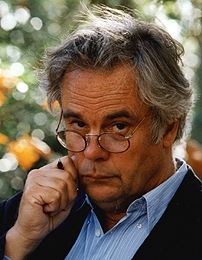Africa's Cindarella

By
Jonathan
Power
TFF
Associate since 1991
Comments directly to
JonatPower@aol.com
July 4, 2008
LONDON - Manioc, cassava, yucca, Ever 'eard of it? Don't be shy to say you haven't. Rice, wheat and soya grab today's headlines. Conferences are called, politicians opine. There is a general panic about one more major source of inflation. Food shortages have hit the urban areas of the Third World and in some countries provoked food riots. Developing countries “defend” their domestic market with export tariffs on grains.
Maybe the solution is not in our stars, our esoteric debates or conference resolutions, but right there - under tropical and subtropical soils. Cassava - to use its most popular name - is a half-discovered crop, a woody scrub on the surface, a tuber, six times larger than the potato, beneath.
In Nigeria, where it grows in profusion, it is tolerant of drought, adaptable to poor soils and can be stored in the ground. Moreover, it is easy to propagate, can be harvested at any time of year and requires little attention. James Grant, the visionary late head of the United Nations' Children's Fund, used to say, “it is potentially the great famine reserve of our times.”
So why is it so ignored? Why in times of African famines or rising world food prices for grains is their no discussion of its immense potential?
A major reason is sheer prejudice. It is regarded by many outsiders, and often urban dwellers in the Third World's overcrowded cities, as a crop low in protein, the poor man's crop. But when people are hungry or can't afford rice or wheat it is not just protein they need but calorie intake too. Ideally, cassava should be eaten with beans or fish, together with spinach or cassava leaves to provide the daily dose of protein. This is how I ate it almost every day in Nigeria this month. There are all sorts of ways of cooking it. My favorite is when the farmer slowly roasts grains of it over a fire in a dry pan - it makes for a crunchy muesli.
At the moment in Nigeria, where agricultural growth is booming, there is no shortage of fish and spinach, soya and beans, nor of snails and chicken which the locals like to eat for their protein. And it is much much cheaper than rice or wheat, even though its price has gone up by 25% the last three months as urban rice and wheat eaters switch to it. But it is still very cheap. In poorer, drier, parts of Africa, where there is not the same profusion of food, cassava-growing must be pushed, despite its lack of protein. Besides, even in the drier areas, there there are often nutritious snails in the ponds and streams and, for vitamins, there could be green cassava leaves, to eat with it.
According to Dr. S.K. Hahn, the former director of of the humid tropics' most important research station, the International Institute for Tropical Agriculture, founded in 1967 with a grant from the Rockefeller and Ford foundations and the government of Nigeria, cassava was introduced into Africa by the Portuguese from Brazil in the late 16th century. Today it is grown in 31 African countries stretching in a wide belt from Madagascar in the southeast to Senegal in the north west. It is also widely grown in Indonesia, the Philippines, India and Vietnam. Each region has its own way of preparing it - boiled or fried like potatoes, turned into a flour to make tapioca (which in war time Britain and in the poor years after, we kids were made to eat at school.) In Indonesia, they also make alcoholic drinks with it. In the Philippines it used for a desert, to be served with coconut cream. In Vietnam it is also used as an animal feed.
Research at the Nigerian institute has shown that it can also be made into an attractive bread. Nigerian television has pushed this in its cookery programs, a substitute for the popular but pricey white bread.
There are some areas it is hard to grow - the mountains of Ethiopia or the driest areas of the Sudan. But research is constantly improving its potential – Dr Kahn himself has produced varieties that double yields and come to maturity in half the time. With more research and resources the work for drier areas could proceed even faster. At the moment the only world institution that takes it seriously is the UN's International Fund for Agricultural Development. It has been funding research on it for nearly 30 years. But now with the “food crisis” upon us an extra big push is needed.
This poor man's crop could be the poor man's Cinderella, James Grant used to say.
Copyright © 2008 Jonathan
Power
Last 
 Next
Next
Jonathan Power can be
reached by phone +44 7785 351172
and e-mail: JonatPower@aol.com
Jonathan
Power
2007 Book
Conundrums
of Humanity
The Quest for Global Justice
“Conundrums
of Humanity” poses eleven questions for our future progress, ranging
from “Can we diminish War?” to “How far and fast can
we push forward the frontiers of Human Rights?” to “Will
China dominate the century?”
The answers to these questions, the author believes, growing out of
his long experience as a foreign correspondent and columnist for the
International Herald Tribune, are largely positive ones, despite the
hurdles yet to be overcome. Martinus Nijhoff Publishers, London, 2007.
William Pfaff, September 17, 2007
Jonathan Power's book "Conundrums" - A Review
"His is a powerful and comprehensive statement of ways to make the world better.
Is that worth the Nobel Prize?
I say, why not?"
Tell a friend about this column by Jonathan Power
Send to:
From:
Message and your name
Get
free articles & updates
|